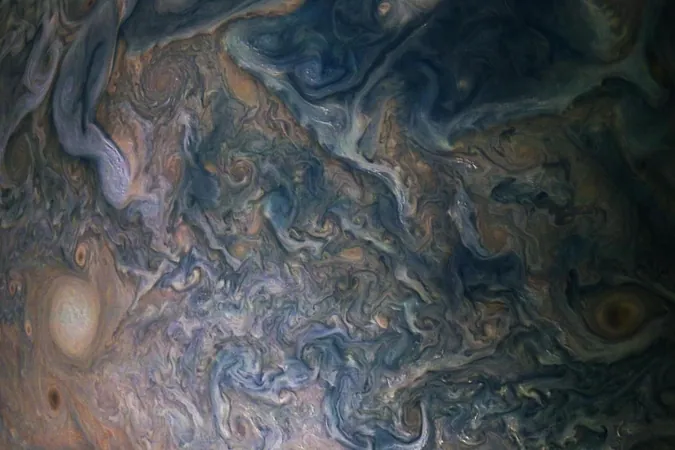
Jupiter's Mysterious Ammonia Slushees Confirmed, Shocking Insights Revealed!
2025-04-16
Author: Wei
Jupiter's Wild Weather Just Got Weirder!
In a cosmic revelation, scientists have uncovered that Jupiter, our majestic gas giant, experiences bizarre hailstorms of mushballs! These are slushy orbs composed of ammonia and water encased in icy shells, and they rain down during intense thunderstorms.
From Theory to Confirmation!
Back in 2020, experts proposed this outlandish idea to explain strange phenomena in Jupiter's atmosphere, only to question its validity over the years. But new research has officially confirmed that these ammonia-packed slushees not only exist, but they might be a common occurrence on all the gas giants in our solar system!
Planetary scientists from UC Berkeley revealed this stunning discovery in the journal Science Advances. Their research indicates that these mushballs, teaming with fierce lightning, form deep within the clouds, around 40 miles beneath the visible atmosphere.
How Do These Ammonia Mushballs Form?
Imagine thunderstorm clouds transporting water ice high into the atmosphere. At extreme altitudes, ammonia acts as an antifreeze, melting the ice and combining with it to create a slushy mixture, which is then encased in an ice shell, forming what we now call mushballs.
Unlocking Jupiter's Secrets!
The mushballs rise and fall within Jupiter’s atmosphere, redistributing ammonia and water while creating areas depleted of ammonia that scientists can detect through radio observations. This phenomenon might explain why certain parts of Jupiter's atmosphere lack ammonia.
Chris Moeckel, a graduate student at UC Berkeley, initially thought this idea was just too far-fetched. After three years of research trying to disprove it, he ultimately confirmed its validity. 'Every time we look at Jupiter, we discovered something new,' said Moeckel. 'It’s a complex, strange system!'
What This Means for Our Understanding of Other Planets?
The groundbreaking study also hints that similar weather patterns, with mushball hailstorms, could occur on distant worlds like Saturn, Uranus, and Neptune. By utilizing advanced technology from the Juno spacecraft, Hubble Space Telescope, and other instruments, researchers penetrated the depths of Jupiter’s atmosphere.
Challenging Perceptions of Jupiter's Atmosphere!
This research highlights that the turbulence observed on Jupiter’s surface doesn't reflect its deeper atmospheric conditions. The upper layers may appear chaotic, but scientists reveal there’s a steady, sluggish layer beneath. For future missions, understanding these dynamics could change how we interpret atmospheres on gas giants!
Is This Just the Beginning?
With findings like these, one can't help but wonder what other astonishing secrets Jupiter and its fellow gas giants may be hiding! Stay tuned as we continue to unlock the mysteries of our solar system.


 Brasil (PT)
Brasil (PT)
 Canada (EN)
Canada (EN)
 Chile (ES)
Chile (ES)
 Česko (CS)
Česko (CS)
 대한민국 (KO)
대한민국 (KO)
 España (ES)
España (ES)
 France (FR)
France (FR)
 Hong Kong (EN)
Hong Kong (EN)
 Italia (IT)
Italia (IT)
 日本 (JA)
日本 (JA)
 Magyarország (HU)
Magyarország (HU)
 Norge (NO)
Norge (NO)
 Polska (PL)
Polska (PL)
 Schweiz (DE)
Schweiz (DE)
 Singapore (EN)
Singapore (EN)
 Sverige (SV)
Sverige (SV)
 Suomi (FI)
Suomi (FI)
 Türkiye (TR)
Türkiye (TR)
 الإمارات العربية المتحدة (AR)
الإمارات العربية المتحدة (AR)